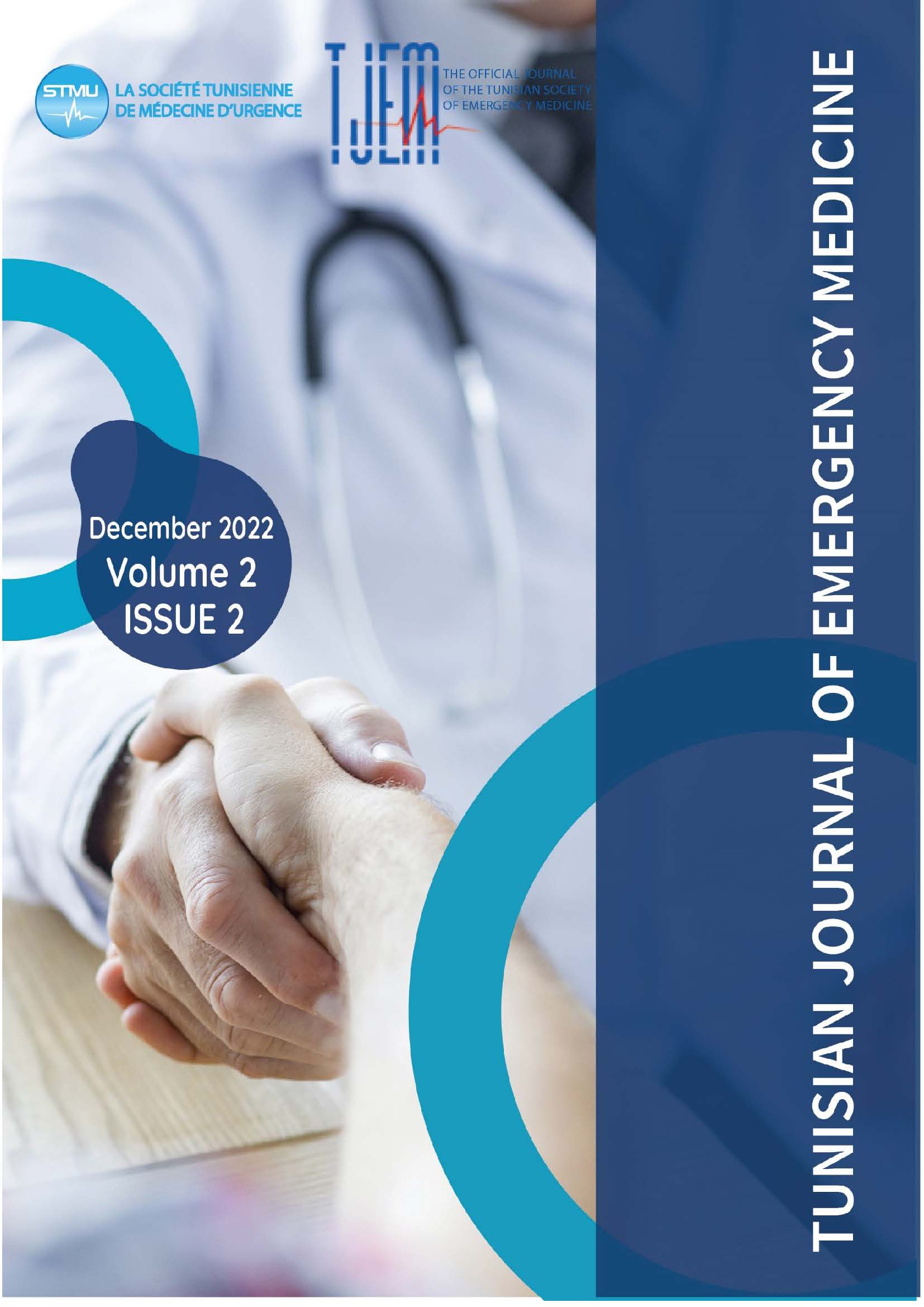Headaches and COVID-19 Infection: Epidemiology and Outcomes in a North African Sample
Rim KARRAY, Imen BEN SALEM, Mouna BOUAZIZ, Abdennour NASRI, Ahlem WALHA, Mariem MALLEK, Nour BELLAAJ, Mabrouk BAHLOUL, Olfa CHAKROUN-WALHA, Noureddine REKIK
- Authors
-
-
Rym KARRAY
Emergency department, Habib Bourguiba University Hospital
-
- Keywords:
- Headaches, covid-19, Acute onset, Outcomes
- Abstract
-
Objectives: This study aims to describe the epidemiological features of headaches in patients with
COVID-19 infection.
Methods: This is a cross-sectional study. Patients older than eighteen and diagnosed with a COVID-19
infection were included. We excluded patients aged less than eighteen, those whose headache could not
be assessed, those with a history of psychiatric or cognitive impairment, those who did not consent to
participate, and deceased patients.
Results: The study involved 728 patients, 371 had headaches due to the SARS-Cov2 infection. The
distribution of clinical forms of the COVID-19 infection in the entire population was as follows: 87.2%
asymptomatic or mild forms (n= 634), 8% moderate forms (n= 58), 4.8% severe forms (n=35).
Headaches were the second reported symptom, after anosmia (n= 400; 54%). Most patients reported a
headache in the first week of symptoms. The intensity of headaches was mild to moderate in 74.8% of
cases (n=275) and they improved within 5.7±4 days.
The univariate analysis showed an association between headaches and the following factors: female
gender (p<0.001), the clinical form of COVID-19 infection (p<0.001). Patients with a mild form had a
higher risk to develop COVID-19 infection-related headaches. Patients with comorbidities had also a
significantly higher risk to develop COVID-19-related headaches (p=0.012). The independent predictors
of acute COVID-19 infection-related headaches presence were only clinical forms of COVID-19
infection, fever, myalgia, abdominal pain, and sore throat (p<0.05).
Conclusion: Headaches associated with COVID-19 infection are frequent, with a female predominance.
They are generally moderate, holocranian paroxysmal, and pulsatile. Red flags are present in most cases - Downloads
- Published
- 12-12-2022
- Section
- Retrospective or cross-sectional study
- License
-
Copyright (c) 2022 Tunisian Journal of Emergency Medicine

This work is licensed under a Creative Commons Attribution-NonCommercial-ShareAlike 4.0 International License.
How to Cite
Similar Articles
- Mounir NAIJA, Rabeb Mbarek, Sondes Laajimi, Haifa BRADAÏ, Dorra Loghmari, A Wandering Atrial Pacemaker in Inferior Wall Infarction. Escape or Survival Rhythm? A Case Report , Tunisian Journal of Emergency Medicine: Vol. 3 No. 2 (2025): TJEM 2025: Vol.3 Issue 2
- Houda BEN SOLTANE, Neurologic manifestations of infective endocarditis , Tunisian Journal of Emergency Medicine: Vol. 2 No. 3 (2023): TJEM Vol2 Issue3
- Safia OTHMANI, Prognostic factors of assault-induced stab wounds in the emergency department , Tunisian Journal of Emergency Medicine: Vol. 2 No. 2 (2022): TJEM Vol2 Issue2
- Rim Karray, Kais Ben Jeddou, Hana Ksentini, Leila Chaari, Adel Chaari, Noureddine Rekik, The Perthes syndrome: a case report , Tunisian Journal of Emergency Medicine: Vol. 3 No. 1 (2025): TJEM 2025: Vol.3 Issue 1
- Houda BEN SOLTANE, Predicting diabetic ketoacidosis severity score: proposal of a therapeutic strategy adapted to the emergency department , Tunisian Journal of Emergency Medicine: Vol. 2 No. 2 (2022): TJEM Vol2 Issue2
- Neila MAAROUFI, Firas Kessentini, Sabra Ouaz, Meriem Jemili, Moufida Nouari, Jihen Lakhal, Bilateral ptosis caused by midbrain hemorrhage: a case report , Tunisian Journal of Emergency Medicine: Vol. 3 No. 1 (2025): TJEM 2025: Vol.3 Issue 1
- Houda BEN SOLTANE, Predicting diabetic ketoacidosis severity score: proposal of a therapeutic strategy adapted to emergency department , Tunisian Journal of Emergency Medicine: Vol. 2 No. 3 (2023): TJEM Vol2 Issue3
- Houda BEN SOLTANE, Evaluation of the prescription of additional examinations in emergency departments , Tunisian Journal of Emergency Medicine: Vol. 2 No. 2 (2022): TJEM Vol2 Issue2
- Dorra Loghmari , Compassion satisfaction and fatigue among healthcare professionals in the emergency medical services during the COVID-19 pandemic , Tunisian Journal of Emergency Medicine: Vol. 2 No. 2 (2022): TJEM Vol2 Issue2
- Olfa chakroun-walha, Overview of the post-night shift syndrome in the COVID-19 pandemic era: predictors in a North African sample of physicians , Tunisian Journal of Emergency Medicine: Vol. 2 No. 3 (2023): TJEM Vol2 Issue3
You may also start an advanced similarity search for this article.
Most read articles by the same author(s)
- Rym KARRAY, Acute myocarditis complicating severe chloralose intoxication: A case report , Tunisian Journal of Emergency Medicine: Vol. 2 No. 2 (2022): TJEM Vol2 Issue2


